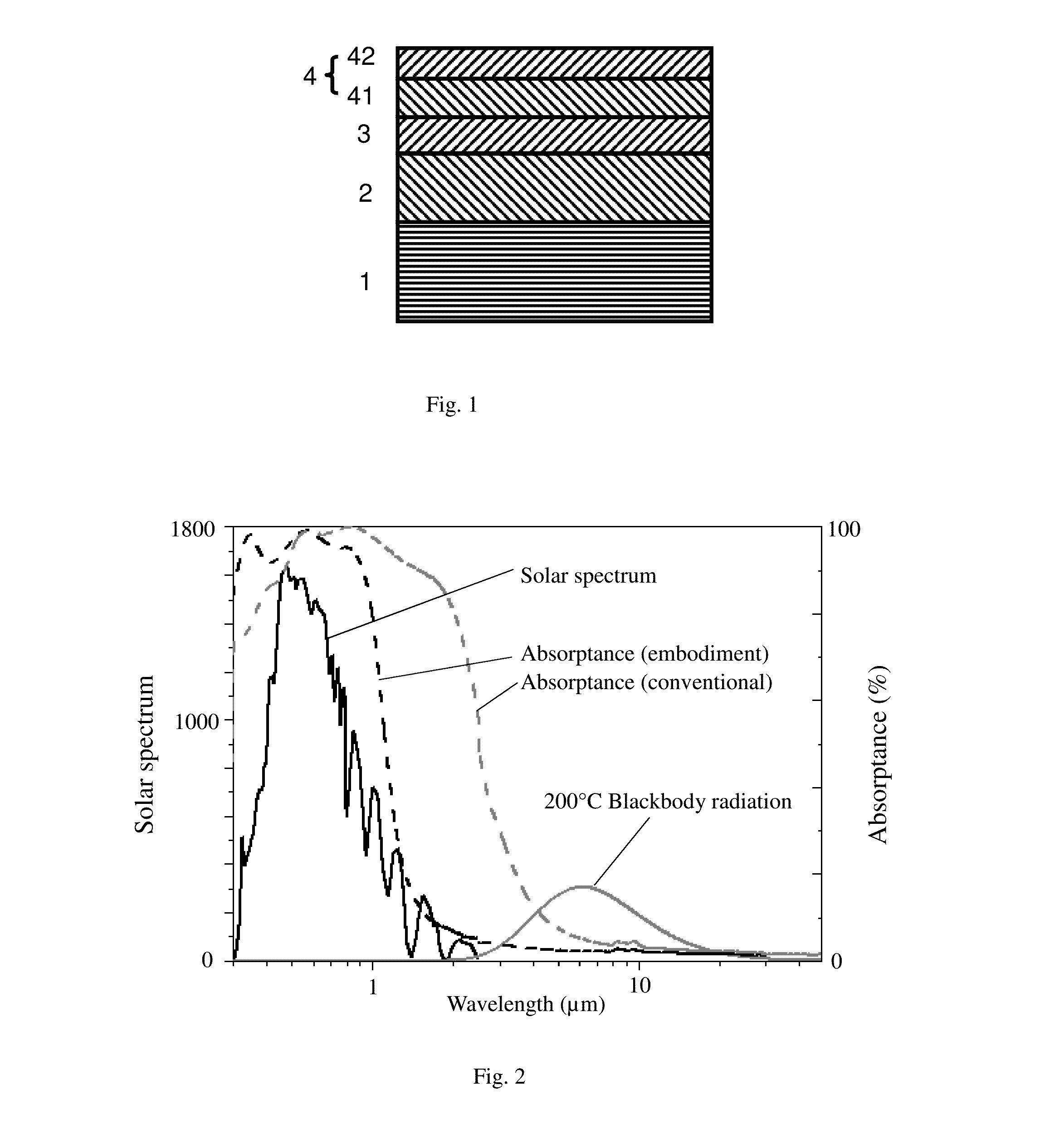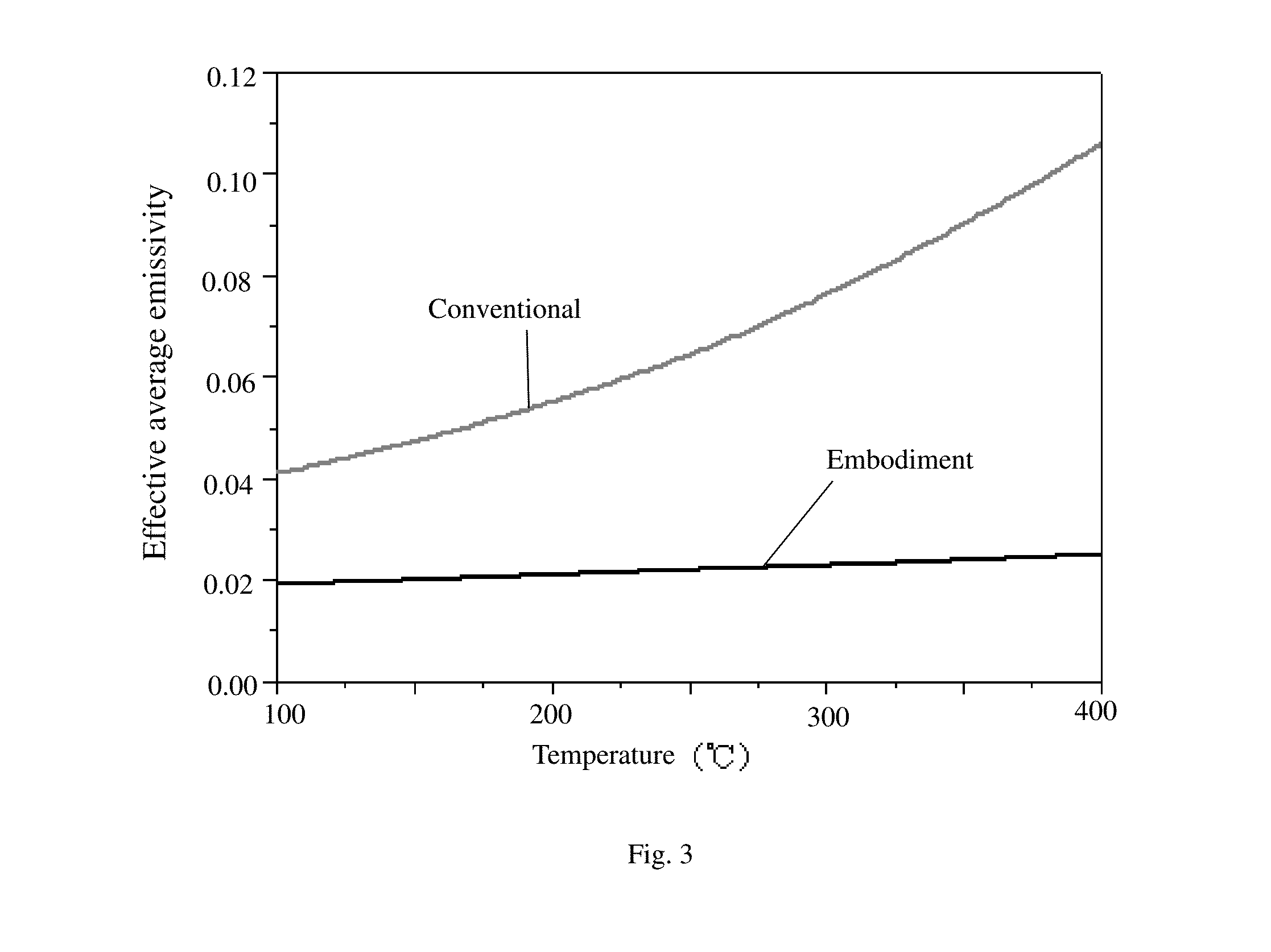Solar spectrum selective absorption coating and its manufacturing method
a selective absorption and solar energy technology, applied in the direction of solar heat devices, ion implantation coatings, coatings, etc., can solve the problems of increasing the material cost, and the photothermal conversion efficiency of the heat collector is relatively low at working temperatures above 200° c, and achieves excellent spectral selectivity, low optical concentration, and reduced thickness of the ge layer
- Summary
- Abstract
- Description
- Claims
- Application Information
AI Technical Summary
Benefits of technology
Problems solved by technology
Method used
Image
Examples
examples
[0041]Table 1 lists the thickness of various single layers of a selective absorption coating based on semiconductor germanium intrinsic absorption formed by magnetron sputtering in one embodiment.
TABLE 1Al layer / Ge layer / TiO2 layer / SiO2 layer / SamplenmnmnmnmEmbodiment150253171
[0042]The specific steps of the preparation process are as follows:
[0043]1) Cleaning of the glass plate: First, use a neutral wash solution to preliminarily clean the glass plate. Place the glass plate in the entrance chamber of the deposition equipment and perform second step cleaning using an RF plasma source to bombard the glass plate surface. The process parameters are as follows: RF source sputtering power is 200 w, working gas Ar (purity 99.99%) flow rate is 45 sccm, the working pressure is 9.8×10−2 mTorr, and sputtering time is 360 s.
[0044]2) Pass the glass place from the entrance chamber to the sputtering chamber of the deposition equipment. The base pressure of the sputtering chamber is lower than 6×10−...
PUM
| Property | Measurement | Unit |
|---|---|---|
| refractive index | aaaaa | aaaaa |
| thickness | aaaaa | aaaaa |
| thickness | aaaaa | aaaaa |
Abstract
Description
Claims
Application Information
 Login to View More
Login to View More - R&D
- Intellectual Property
- Life Sciences
- Materials
- Tech Scout
- Unparalleled Data Quality
- Higher Quality Content
- 60% Fewer Hallucinations
Browse by: Latest US Patents, China's latest patents, Technical Efficacy Thesaurus, Application Domain, Technology Topic, Popular Technical Reports.
© 2025 PatSnap. All rights reserved.Legal|Privacy policy|Modern Slavery Act Transparency Statement|Sitemap|About US| Contact US: help@patsnap.com



